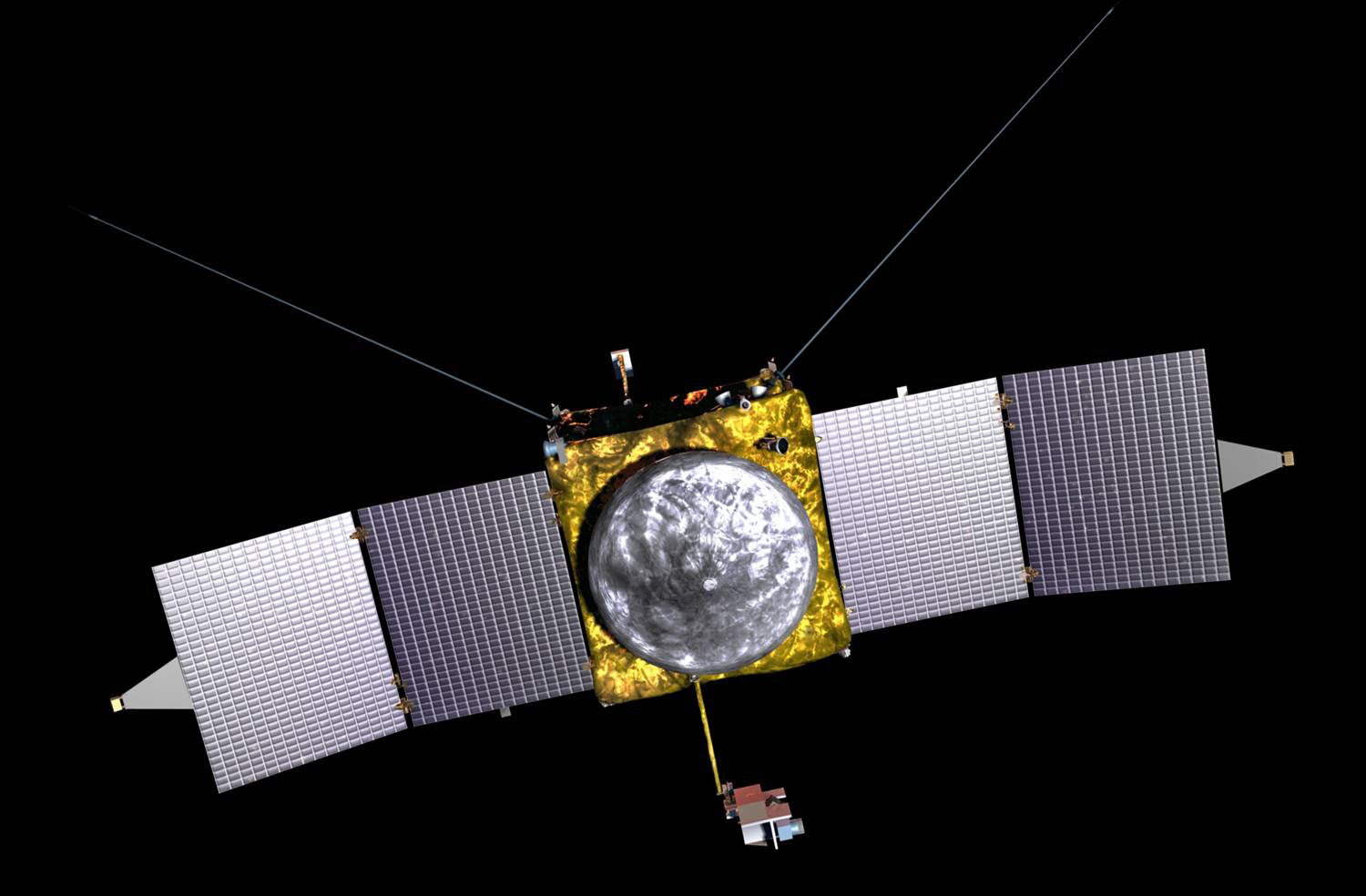The next mission to the Red Planet, the Mars Atmosphere and Volatile Evolution (MAVEN) will be the first spacecraft ever to make direct measurements of the Martian atmosphere. MAVEN will carry eight science instruments, including a magnetometer that will investigate what remains of Mars’ magnetic “shield,” and will, in essence, help to look back in time at what may have happened to a planet once thought to have an abundance of liquid water but is now a frozen desert. The magnetometer will play a key role in studying the planet’s atmosphere and interactions with solar wind, helping answer the question of why Mars lost much of its atmosphere.
“The magnetometer helps us see where the atmosphere is protected by mini-magnetospheres and where it’s open to solar wind,” said Jack Connerney, a co-investigator for the mission. “We can study the solar wind impact and how efficient it is at stripping the atmosphere.”
By measuring sections of the planet’s magnetic field, the magnetometer could help scientists create a bigger picture of the planet’s overall atmosphere.
MAVEN is the first mission to Mars specifically designed to help scientists understand the past – and also the ongoing — escape of CO2 and other gases into space. MAVEN will orbit Mars for at least one Earth-year, about a half of a Martian year. MAVEN will provide information on how and how fast atmospheric gases are being lost to space today, and infer from those detailed studies what happened in the past.
Studying how the Martian atmosphere was lost to space can reveal clues about the impact that change had on the Martian climate, geologic, and geochemical conditions over time, all of which are important in understanding whether Mars had an environment able to support life.
MAVEN is scheduled to launch in 2013, with a launch window from Nov. 18 to Dec 7, 2013. Mars Orbit Insertion will be in mid-September2014.
Find out more about MAVEN at the mission website.


LSPC 2013 has some interesting input on this. It seems today’s crust, and by extrapolation the crust some ways back in time, can’t sequestrate carbon dioxide due to the thin atmosphere:
“It’s generally assumed that if you weather minerals under a carbon dioxide atmosphere, you’ll get carbonate minerals; so it’s been a surprise that so few exposures of carbonate minerals have been found on Mars. Dehouck found that under a carbon dioxide atmosphere, almost all of the weathering products from olivine were in the form of amorphous silicate minerals. In fact, these kinds of minerals have been found all over Mars both from orbit and on the ground. Even clay minerals were more abundant in the weathering products under carbon dioxide than carbonates. But in the presence of the oxidizing hydrogen peroxide, neither clay nor carbonate minerals formed; pretty much only amorphous silica, with a teeny amount of iron hydroxides.”
[ http://www.planetary.org/blogs/emily-lakdawalla/2013/03281019-lpsc-2013-watery-martian.html ]
Which means later Mars has mainly lost its carbon dioxide dominated atmosphere to space. That doesn’t bar earlier crust, when the atmosphere was thick enough, to have sequestrated carbonates instead. Some deep such layers have been surmised to have been uncovered by deeply excavating impactors.
It may be that Mars was once catastrophically thinned, akin to how Earth’s atmosphere was catastrophically oxygenated when the process had gone far enough. Eg quite suddenly (geologically speaking) switching from a stable mode of dense, Earth like atmosphere that interacted mostly with the crust to a much different stable mode of UV permeating thin atmosphere that interacted mostly with space.
This ties in with how to predict Curiosity’s finds of an early, prolonged free water action.